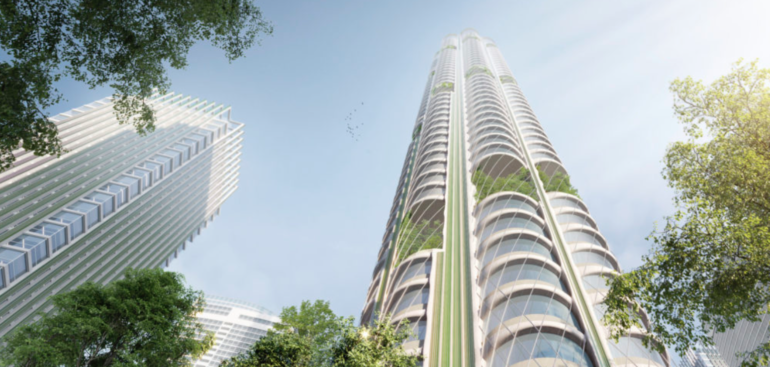Latest
Agriculture and the Future of Carbon Storage Structures
PanXchange Blog
In the past few years, agriculture and its capacity as a carbon storage and removal vehicle has been thrust into the limelight.
A prime example of this happened during the United Nations’ COP26 climate conference in early November, when engineering and architectural design firm Skidmore, Owings & Merril (SOM) unveiled Urban Sequoia – a concept to regenerate the environment via buildings that “act like trees” and sequester carbon.
According to the design firm, materials in the Urban Sequoia prototypes like hempcrete, bio-bricks, bio-crate, and timber reduce the carbon impact of construction by approximately 50% compared to traditional concrete and steel structures. However, they claim that a more comprehensive approach of minimizing material inputs, optimizing building design, and leveraging the latest and greatest in carbon capture technology could reduce construction emissions up to a whopping 95%.
SOM reports that the global building sector generates nearly 40% of all global carbon emissions. Studies have predicted that an additional 230 billion square meters of new building stock will be needed by 2060, driven by urban population growth. This sets a strong precedent for a design concept like Urban Sequoia. The prototype for an Urban Sequoia building was revealed to sequester up to 1,000 tons of carbon per year, equivalent to 48,500 trees.
The design allows us to move beyond net-zero into buildings that absorb carbon to the extent of being carbon-negative. SOM was quoted saying, “after 60 years, the prototype would absorb up to 400 percent more carbon than it could have emitted during construction.” In addition, captured carbon can be used for ancillary purposes such as biofuels or composite materials for roadways, pipelines, and pavement. These are estimated to save between 100-300 tons of carbon emissions per square kilometer per year.
This announcement is arguably the most notable mention of an application of hempcrete (and plant biomass (not just hemp) to date and is unparalleled in terms of its scale. Nature-based solutions to sequester CO2 emissions are rapidly becoming an attractive investment theme, as evidenced by another monumental announcement by the U.S. Department of Energy (DOE). This month, the DOE announced that they will be providing “up to $45 million to support the development of technologies that can transform buildings into net carbon storage structures”.
The PanXchange team asserts that more permanent stores of carbon such as hempcrete will become highly valuable as a sustainable building block for the future, and climate incentives such as carbon offset credits will improve the economic feasibility of these types of products. We believe permanent carbon storage will pull ahead in value compared to applications like digestible products such as CBD or hemp seeds or other digestible agricultural products, which are more temporary carbon stores. While the industry continues to optimize the material properties of hemp, streamlining manufacturing processes and improving input material sourcing methods need to come first.
PanXchange is building a more robust and efficient market for voluntary carbon removal credits derived from croplands. Take our course and see how you can get started.


